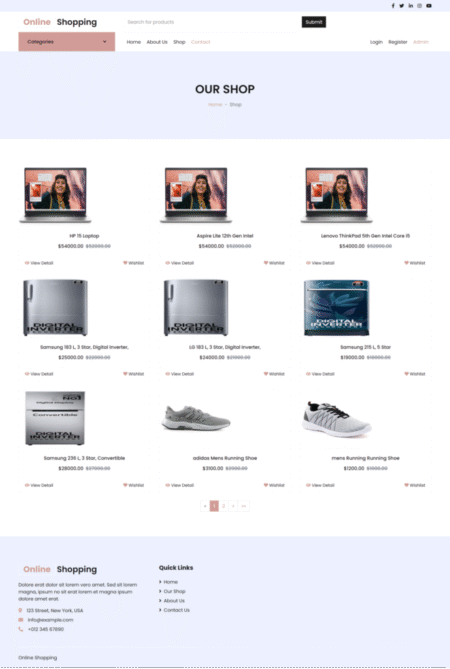In the era of traditional Sitecore MVC, the rendering lifecycle was tightly coupled to the Sitecore server. HTML generation, content retrieval, and presentation logic were all orchestrated within a single monolithic application. With the advent of headless architectures, particularly with Sitecore XM Cloud, this paradigm has fundamentally shifted.
The responsibility for rendering has been decoupled and offloaded to a dedicated front-end application (e.g., React, Next.js, Vue.js), transforming Sitecore into a highly optimized content and layout delivery platform via robust APIs. For developers building Sitecore headless applications, a profound understanding of how a request traverses from the browser, through the front-end rendering host, interacts with Sitecore, and ultimately returns a rendered page, is paramount. This intricate knowledge forms the bedrock for effective debugging, advanced performance optimization, and sophisticated personalization implementations.
This blog post will meticulously breaks down:
- The generalized request processing flow in Sitecore headless applications.
- The specific instantiation of this flow within JSS applications built leveraging the Next.js framework.
- Debugging tips.
Sitecore XM Cloud and other headless Sitecore setups embody the principle of separation of concerns, decoupling content management from presentation logic. Rather than Sitecore generating the final HTML markup, your front-end rendering application (React/Next.js) dynamically fetches content and layout data via API endpoints and orchestrates the rendering process, whether client-side or server-side. Comprehending this architectural decoupling is critical for engineering performant, scalable, flexible, and personalized digital experiences.
The General Request Flow in Sitecore Headless Architectures
Irrespective of the specific front-end rendering host (JSS, ASP.NET Core Rendering SDK, etc.), the foundational request processing flow in Sitecore headless applications remains consistent:
- Client Request Initiation: A user initiates a request by navigating to a specific URL (e.g.,
https://www.example.com/about) in their web browser. This request is directed towards your front-end rendering host. - Front-end Rendering Host Interception: The front-end rendering host (e.g. a Next.js application deployed on Vercel, or Netlify) receives the incoming HTTP request.
- Data Fetching from Sitecore: The rendering host, acting as a data orchestrator, makes an API call to Sitecore to retrieve the necessary page layout and content data. This can occur via two primary mechanisms:
- Sitecore Layout Service : A traditional RESTful endpoint that delivers a comprehensive JSON representation of the page’s layout, components, and associated field values. This service is part of the Sitecore Headless Services module.
- Sitecore Experience Edge GraphQL API: A more flexible and performant GraphQL endpoint that allows for precise data querying. This is the preferred mechanism for XM Cloud-native applications, providing a single endpoint for diverse data retrieval.
- Query Parameters: Critical parameters passed in this request typically include
route(the requested URL path),sc_lang(the desired content language),sc_site(the target Sitecore site definition), and potentially additional context parameters for personalization or A/B testing.
- Sitecore Route and Context Resolution: Upon receiving the data request, Sitecore performs the following server-side operations:
- Item Resolution: It resolves the incoming
routeparameter to a specific Sitecore content item within the content tree, based on defined route configurations (e.g.,sitecore/content/MyTenant/MySite/About). - Context Establishment: It establishes the current request context, including the site, language, and user session, personalized page variant.
- Layout Computation: Based on the resolved item and evaluated personalization, Sitecore computes the final page layout, including the arrangement of renderings within placeholders and the specific data sources for each component.
- Item Resolution: It resolves the incoming
- Sitecore Response Generation: Sitecore returns a structured JSON payload to the rendering host. This payload typically includes:
- Layout Metadata: Information about the overall page structure, placeholder definitions, and associated rendering components.
- Component Data: For each component on the page, its type (e.g., “Hero”, “RichText”), its associated data source item ID (if applicable), and all serialized field values (e.g.,
Title,Body,Image).
- Front-end Rendering: The rendering host receives the JSON payload and, using its component factory (a mapping between Sitecore component names and UI component implementations), dynamically constructs the HTML for the requested page.
- Component Mapping: Each JSON-defined component type is mapped to its corresponding React/Next.js UI component.
- Data Binding: The serialized field values from the JSON are passed as props to the UI components.
- Placeholder Resolution: The rendering host iterates through the placeholder definitions in the JSON, rendering child components into their designated placeholder regions.
- Client-side Hydration: For server-rendered applications (SSR/SSG), the initial HTML is sent to the browser, where React then “hydrates” it, attaching event listeners and making the page interactive.
- Post-render Personalization: Any client-side personalization or analytics integration (e.g., Sitecore Personalize Engage SDK) may occur after the initial page render.
Key takeaway: Sitecore serves as the intelligent content and layout API, while the front-end application assumes full responsibility for the final HTML rendering and user interface interaction.
Deep Dive: Request Lifecycle in JSS + Next.js Applications
The general headless flow finds its specific implementation within a JSS application leveraging the Next.js framework, benefiting from Next.js’s powerful data fetching and rendering capabilities.
1. User Request Initiation
A user navigates to a specific route, such as /products, initiating an HTTP GET request directed to your deployed Next.js application, which acts as the unified rendering endpoint.
2. Next.js Middleware and Sitecore Add-on Integration (Edge-Based Execution)
If implemented, the middleware.ts file in your Next.js application executes at the Edge (close to the user) before the request even reaches your application’s pages. This provides an opportune moment for early request manipulation and context enrichment:
- Authentication & Authorization: Redirecting unauthorized users or validating session tokens.
- Request Rewrites & Redirects: URL transformations based on dynamic conditions.
- Header Manipulation: Injecting custom headers or modifying existing ones.
- Contextual Data Injection: Reading user-specific cookies, geolocation data, and potentially passing this context to downstream services via HTTP headers. This is crucial for pre-render personalization.
This middleware layer is where Sitecore’s JSS Next.js add-ons particularly shine, streamlining complex Sitecore-specific functionalities.
2.1 Sitecore JSS Next.js Add-ons: Extending Middleware Capabilities
Sitecore provides specialized add-ons for JSS Next.js applications that are designed to integrate seamlessly with Next.js middleware, enhancing data fetching and other critical functionalities at the Edge. These add-ons abstract away much of the boilerplate code, allowing developers to focus on business logic.
Key add-ons relevant to the request lifecycle and that are compatible with XM Cloud are:
- SXA (nextjs-sxa):
- Includes example components and the setup for Headless SXA projects.
- Next.js Multisite Add-on (
nextjs-multisite):- Enables a single Next.js rendering host to serve multiple Sitecore sites.
- Leverages middleware to resolve the correct Sitecore site (
sc_siteparameter) based on the incoming request’s hostname, path, or other routing rules. This ensures the correct site context is passed to the Layout Service or GraphQL calls. - Often uses a
GraphQLSiteInfoServiceto fetch site definitions from Sitecore Experience Edge at build time or runtime.
- Next.js Personalize Add-on (
nextjs-personalize):- Integrates with Sitecore Personalize (formerly Boxever/CDP) for advanced client-side personalization and experimentation.
- Its core component, the
PersonalizeMiddleware, is designed to run at the Edge. - The
PersonalizeMiddlewaremakes a call to Sitecore Experience Edge to fetch personalization information (e.g., page variants). - It then interacts with the Sitecore CDP endpoint using the request context to determine the appropriate page variant for the current visitor.
- Crucially, if a personalized variant is identified, the middleware can perform a rewrite of the request path (e.g., to
/_variantId_<variantId>/<original-path>). This personalized rewrite path is then read by the Next.js app to manipulate the layout and feed into client-side Page View events. This allows client-side logic to render the specific personalized content. - Also includes a Page Props Factory plugin to simplify data retrieval for personalized content.
These add-ons are included in your application when you create a Next.js project with the JSS initializer script, you can include multiple add-ons in your application. In addition to the above add-ons, you also get middleware plugin redirects.ts that supports and enables redirects defined in Sitecore.
3. Next.js Server-Side Rendering (SSR) via getServerSideProps
JSS Next.js apps commonly employ a catch-all route (e.g., pages/[[...path]].tsx) to dynamically handle arbitrary Sitecore content paths. The getServerSideProps function, executed on the rendering host server for each request, is the primary mechanism for fetching the Sitecore layout data.
While Sitecore add-ons in middleware can pre-fetch data, getServerSideProps remains a critical point, especially if you’re not fully relying on middleware for all data, or if you need to merge data from multiple sources. The layoutData fetched here will already reflect any server-side personalization applied by Sitecore based on context passed from middleware.
4. Sitecore Layout Service / Experience Edge GraphQL Processing
Upon receiving the data fetch request from the Next.js application, Sitecore’s backend performs a series of crucial operations as mentioned above.
5. React Rendering with the JSS Component Factory
Upon receiving the layoutData JSON, the JSS Next.js application initiates the client-side (or server-side during SSR) rendering process using its component factory. This factory is a crucial mapping mechanism that links Sitecore component names (as defined in the componentName field in the Layout Service JSON) to their corresponding React UI component implementations.
6. HTML Response to Browser
Next.js completes the server-side rendering process, transforming the React component tree into a fully formed HTML string. This HTML, along with any necessary CSS and JavaScript assets, is then sent as the HTTP response to the user’s browser. If personalization rules were applied by Sitecore, the returned HTML will reflect the specific component variants or content delivered for that particular user.
7. Client-Side Hydration
Once the browser receives the HTML, React takes over on the client-side, “hydrating” the static HTML by attaching event listeners and making the page interactive. This ensures a seamless transition from a server-rendered page to a fully client-side interactive single-page application (SPA).
Debugging Tips for Sitecore JSS Applications
When working with Sitecore JSS applications, in headless setups, debugging can be a crucial part of development and troubleshooting when components fail to render as expected, personalization rules seem to misfire, or data appears incorrect.
1. Enable Debug Logs in the JSS App
JSS uses a logging mechanism based on debug – a npm debugging module. The module provides a debug() function, which works like an enhanced version of console.log(). Unlike console.log, you don’t need to remove or comment out debug() statements in production – you can simply toggle them on or off using environment variables whenever needed.
To activate detailed logs for specific parts of your JSS app, set the DEBUG environment variable.
- To output all debug logs available, set the
DEBUGenvironment variable tositecore-jss:*. The asterisk (*) is used as a wildcard.<span class="line">DEBUG=sitecore-jss:*</span> - To filter out and display log messages from specific categories, such as those related to the Layout Service, set the variable like so
<span class="line">DEBUG=sitecore-jss:layout</span> - To exclude logs of specific categories use
-prefix:<span class="line">DEBUG=sitecore-jss:*,-sitecore-jss:layout</span>
Please refer to this document to get details of all the available debug logging.
2. Use Browser DevTools to Inspect Logs
If your app runs client-side, and the debug package is configured, JSS logs will appear in the browser console.
To enable this manually in the browser, set this in the browser console:
Then refresh the page. You’ll start seeing logs for:
-
Layout service requests
-
Component-level rendering
-
Data fetching and personalization events
3. Leveraging Server-Side Logging within Next.js
Next.js’s server-side data fetching functions (getServerSideProps, getStaticProps) provide excellent points for detailed logging.Add console.log statements within your getServerSideProps or getStaticProps functions to get more details of the request and its data. When deployed to platforms like Vercel, or Netlify, these console.log statements will appear in your serverless function logs (e.g., Vercel Function Logs).
Additionally, when deploying your Sitecore headless application on Vercel, you can leverage Vercel’s built-in request logging and observability features. These tools allow you to track incoming requests, inspect headers, view response times, and monitor serverless function executions. This visibility can be especially helpful when debugging issues related to routing, personalization, or data fetching from the Layout Service or other backend APIs.
Wrapping It All Up: Why This Matters
Understanding how requests are processed in Sitecore Headless applications – especially when using JSS with Next.js – gives developers a strong foundation for building high-performing and maintainable solutions. By grasping the complete request lifecycle, from incoming requests to Layout Service responses and component rendering, you gain the clarity needed to architect more efficient and scalable applications. Coupled with effective debugging techniques and observability tools, this knowledge enables you to identify bottlenecks, troubleshoot issues faster, and deliver seamless user experiences. With Sitecore’s architecture already embracing composable and headless paradigms, understanding these fundamentals is essential for developers looking to build modern, future-ready digital experiences.
Source: Read MoreÂ


